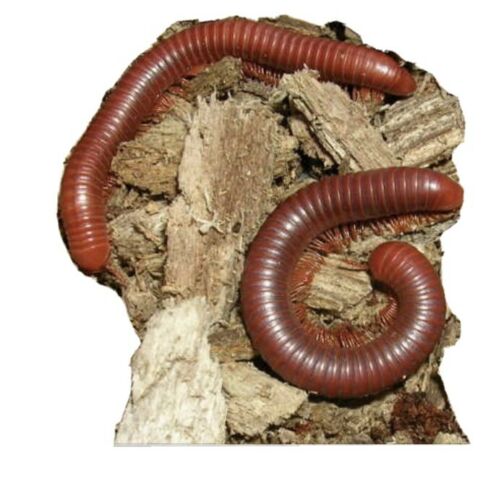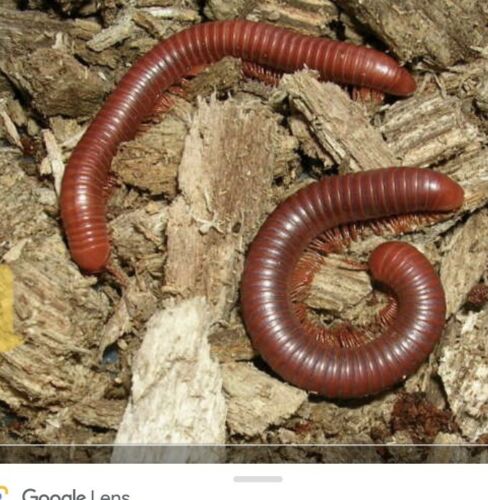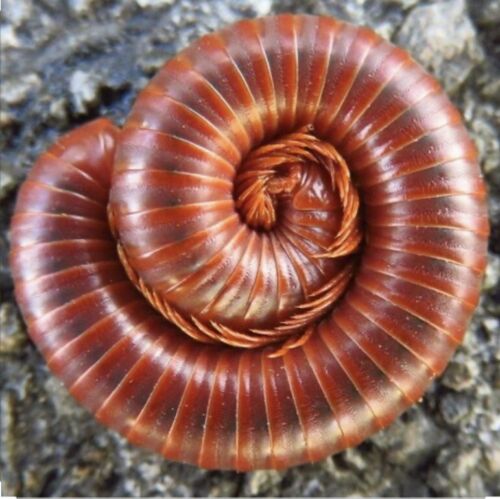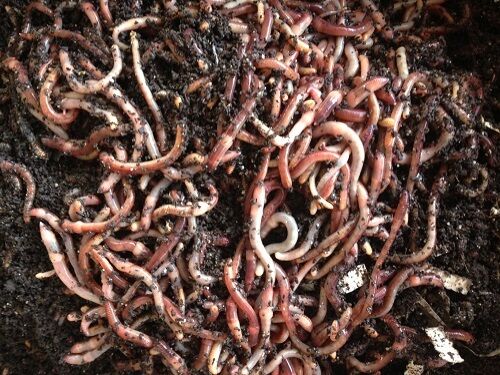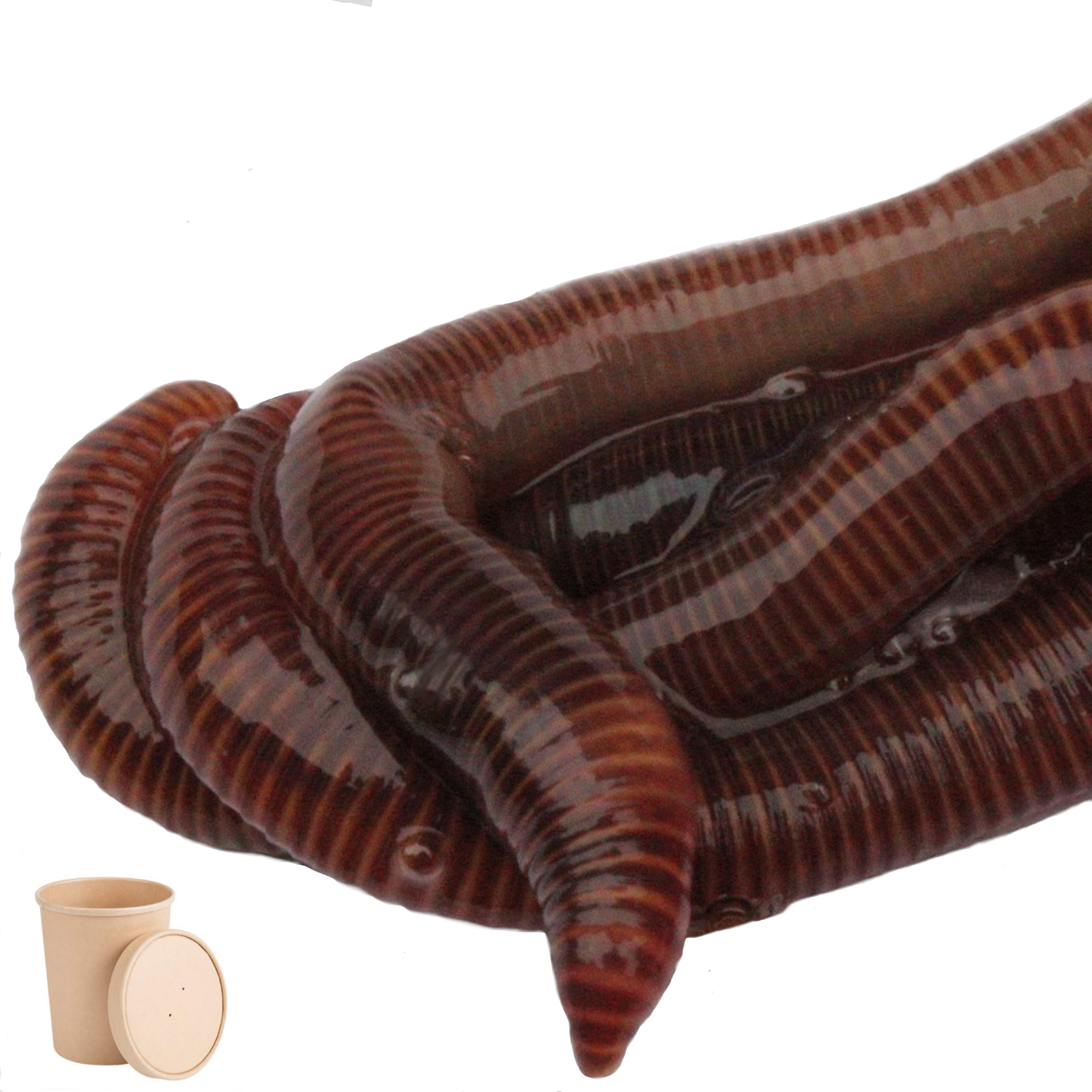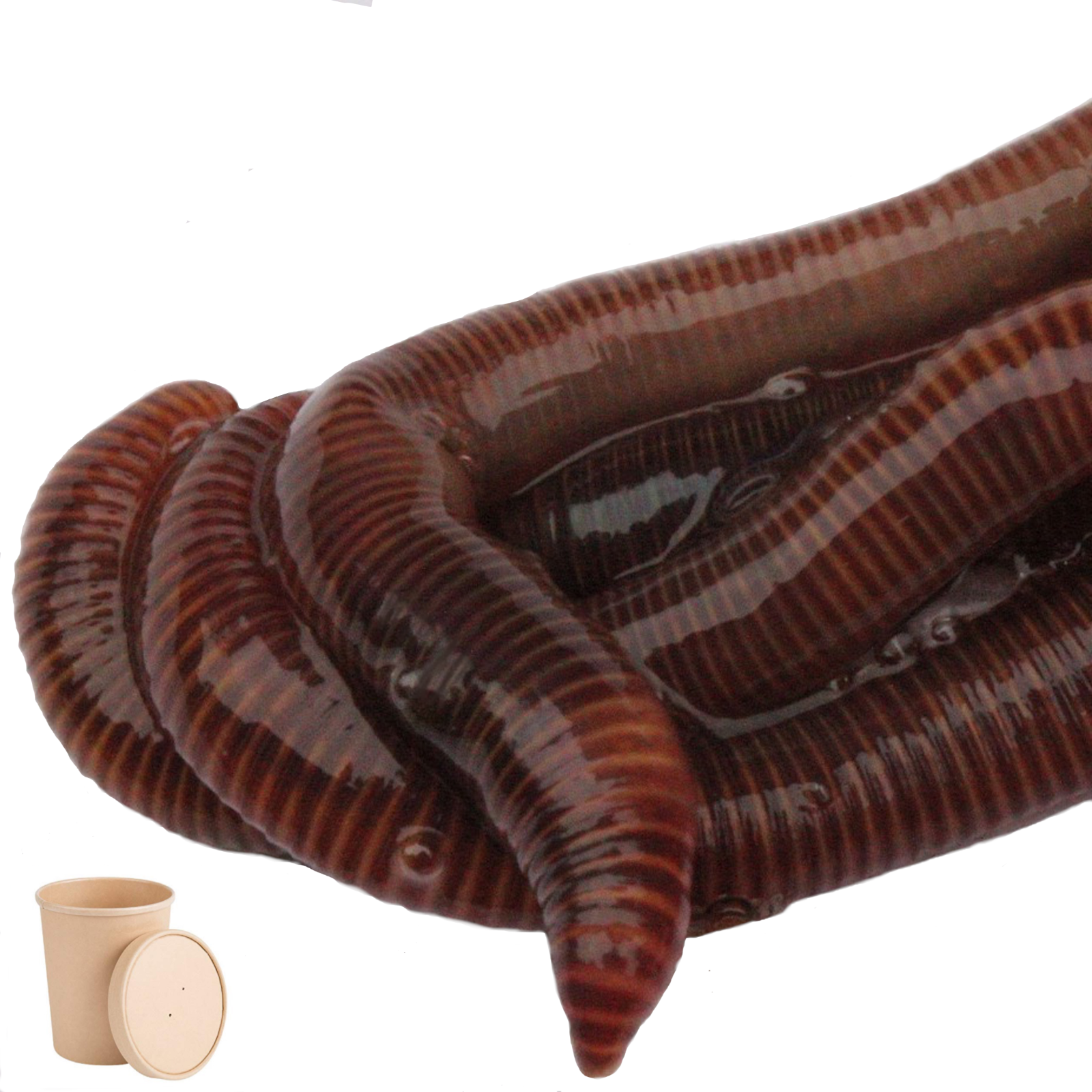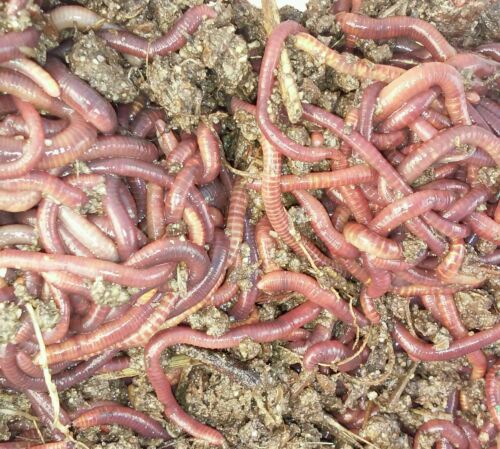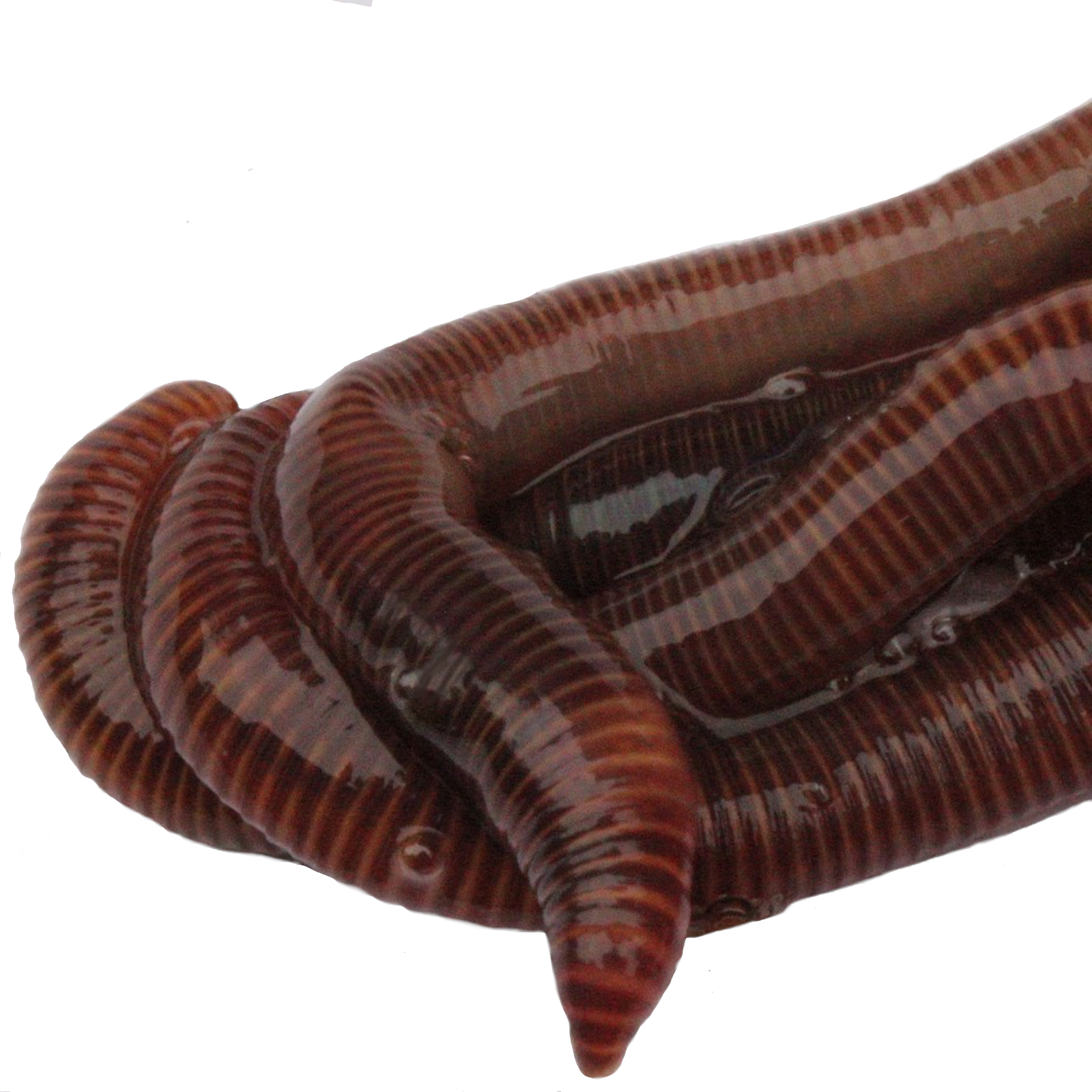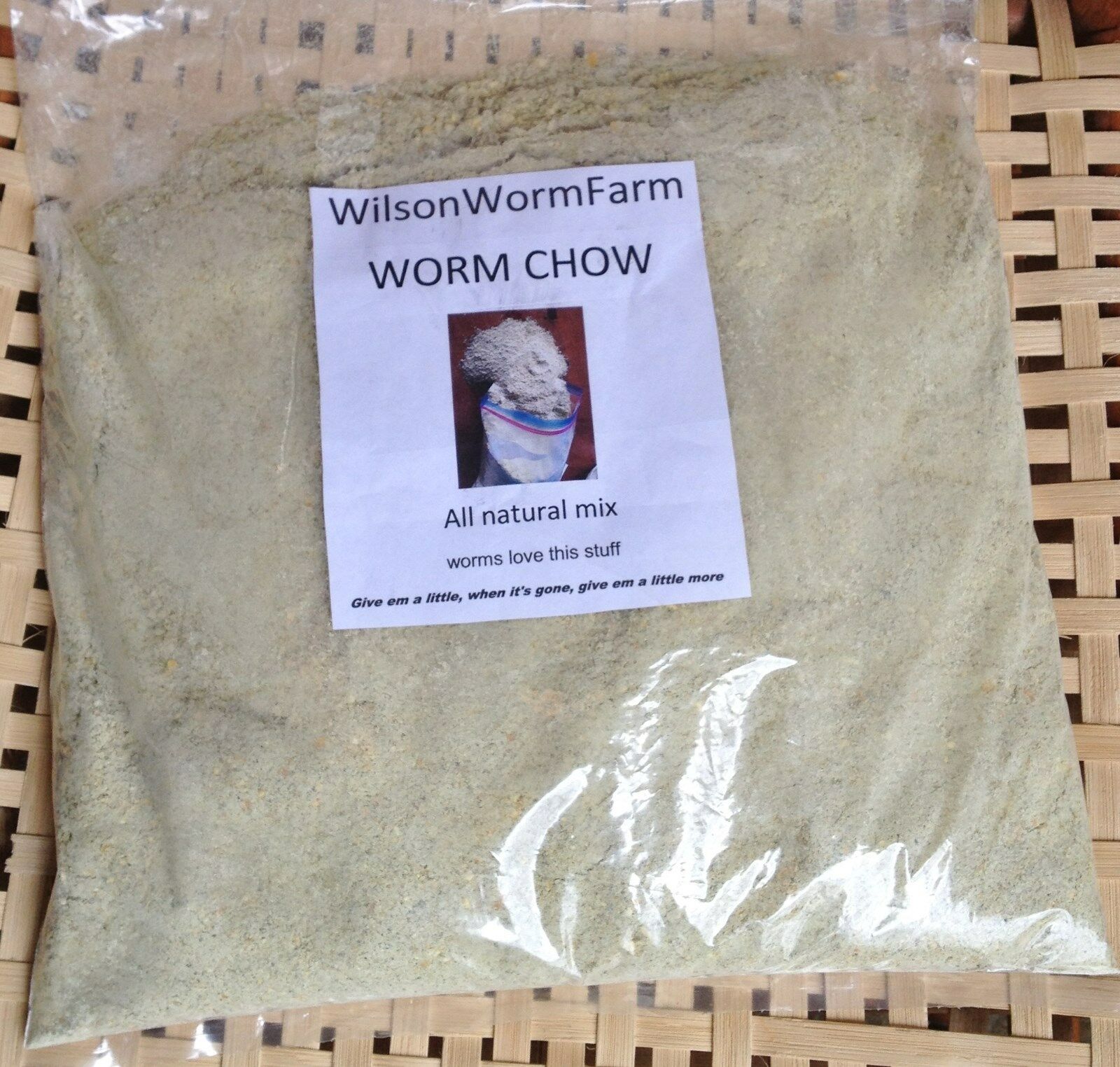-40%
500 Live Florida Rusty Millipede, Fun Educational Pet, - Super Deal
$ 73.91
- Description
- Size Guide
Description
500 Live Florida Rusty Millipedes, start your composting immediately, without waiting for population to grow, or have a full colony as pets, Fun Educational Pet's, Amazing Garden Composter. Shipped with USPS 2-3 day Priority Mail.Great pets and even better composers converting organic matter to rich dark soil.
Great pets or for use in composting.
The below Article is credited to Josh’s Frogs
Scarlet Millipedes
Scarlet Millipedes are a smaller (about 2.5″-3″) millipede that has naturalized in Florida. These guys were originally native to Malaysia and Indonesia. Trigoniulus corallinus is also sometimes called the rusty, red, or rusty-red millipede. It’s a small and hardy species and really stands out in a vivarium.
Bumblebee Millipedes
Bumble Bee Millipedes (Anadenobolus monilicornis) have become naturalized in the southeastern US after being introduced from South America by the tropical plant industry. These small, hardy, and very colorful millipedes reach about 2.5″ in length and are very easy to care for.
Housing your Millipede
Millipedes are easy to house. You’ll want the enclosure to be at least as wide as the animal’s length, and at least twice as long for optimal wiggle room. Keep in mind this is minimum housing size. Your pede will feed primarily on its substrate, so the more space for substrate the merrier. Plastic Critter Keepers or small tanks work well – even plastic storage containers can be easily modified with some air holes for use.
The single most important thing about housing millipedes is their substrate. Substrate acts as a place for the millipede to dig, eat, hide, drink, and live in. For a millipede, substrate = life.
Substrates should consist of a mix of soil, wood, and leaves. Josh’s Frogs Milli Mix is specifically designed to be the best substrate for your millipedes. Over time, any substrate will be exhausted of calcium. Add a bit of Josh’s Frogs MicroCal directly to the substrate to add or replenish lost calcium.
The substrate should be about 4″-6″ in depth. Keep moist at the bottom and allowed it to very slightly dry out at the top.
Humidity is a very important aspect of millipede keeping. Millipedes will drink from standing water – some people provide them with a small water bowl. But misting, providing a moist substrate, and providing fresh food will keep them hydrated. Critter keepers and other open-air products can dry out quickly, but do look a bit nicer than plastic shoe boxes. If you go with a cage with a lot of ventilation, you’ll want to mist daily.
You’ll be fine keeping your millipedes at room temperature. For most species, 72F to 78F is ideal. Supplemental heating in the form of a low wattage heat mat can be used if needed, but take care that it doesn’t dry out your millipede’s habitat too quickly.
Feed the Pede
Millipedes will primarily feed on their substrate – they love decomposing wood and leaves! This should make up the bulk of their diet, making it necessary to change out spent substrate (appears as little dirt balls) with fresh substrate on a regular basis.
You’ll also want to provide the occasional fresh fruit or leafy greens, as well as Repashy Bug Burger, which provides a much-needed source of calcium. Make sure to remove food if it ever becomes moldy. Offering a bit of food once a week or so (in addition to their substrate) is plenty.
Things to Keep in Mind
Remember that millipedes are toxic – never allow young children to handle them unsupervised! As long as millipedes are not eaten and hands are washed after touching millipedes, they’re pretty much harmless.
Many species will spit up a bit if startled – this can easily dye your skin and take several days to fade.
Millipedes commonly host symbiotic mites that help keep the millipede clean. These mites live on the millipede and eat waste or bits of food that can become caught in the millipede’s legs. These mites are harmless, so don’t be concerned if you see some!
Thank You for visiting the Island Gardeners.
If you have any questions about our products or a purchase please feel free to contact us, we would be more than happy to assist you
